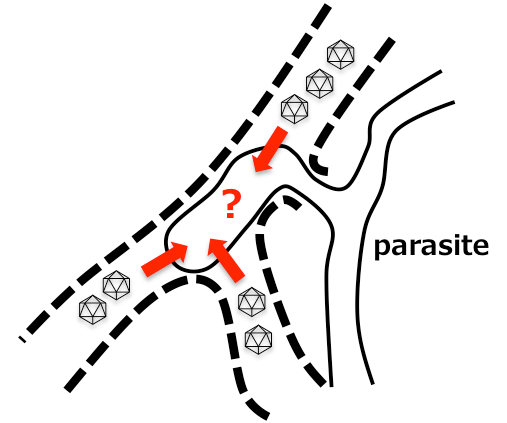Resarch Topics
Apr 1, 2022
Virus Ecology
What impact does viral infection have on pathogenicity and environmental adaptability of host Oomycete?
We are interested in how hosts use virus infection for environmental adaptation. We are using Pythium and Globisporangium (Oomycetes) and oomycete viruses as model experiments to investigate the effects of oomycete virus infection on the pathogenicity and environmental adaptation of these organisms.
Oomycetes are fungal-like organisms classified as members of the stramenopiles. They include well-known plant pathogens such as Pythium, Globisporangium, Phytophthora, and downy mildew, which cause serious losses in crop production worldwide. Phylogenetic analyses have revealed that these pathogens appear to have radiated from a common ancestor and have independently evolved in three lineages of oomycetes. Long coevolution could have occurred between plant-parasitic oomycetes and their viruses, and it is possible to trace the phylogenetic relationship between oomycetes and viruses. Thus, oomycete viruses can be a good model for studying the coevolution of viruses and oomycete hosts.
Recently, oomycete viruses have been reported to infect plant parasites such as Globisporangium, Phytophthora, and downy mildew. We have identified a novel partitivirus, toti-like viruses, and a bunya-like virus from G. nunn, G. splendens, and G. polare. We will identify additional oomycete viruses and investigate their coevolution with their host oomycetes.
